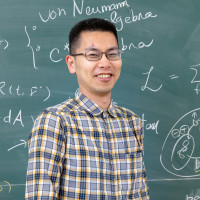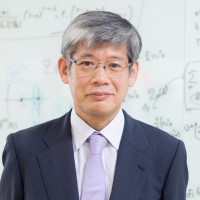Is the World written in the Language of Mathematics? - Exploring the Mysteries of the Universe, Life, and Information
2021-05-19
Book

Authors: Yuki Yokokura, Jeffrey Fawcett, Takumi Doi and Masato Taki
Editor: Tetsuo Hatsuda and Takashi Tsuboi
Language: Japanese
Release date: May 28, 2021
Description
Exploring from a Mathematical Perspective Reveals a New World!
What happens when you put an apple in a black hole?
Is the human blueprint full of garbage?
What is the ultimate structure of matter in this world?
Can deep learning solve impregnable problems?
Welcome to the forefront of exciting research.
Table of Contents
- Introduction (Tetsuo Hatsuda)
- Chapter 1 Journey to the Inside of an Evaporating Black Hole: Modern Physics Played with Thought Experiments (Yuki Yokokura)
- 1.1 The Beginning of the Journey
- 1.2 Information Problem--What happens to an apple that enters a black hole?
- 1.3 Heat and Time -- From the Steam Engine to the Arrow of Time
- 1.4 The Fusion of Time and Space--A Young Einstein's Question
- 1.5 Quantum Mechanics--Insane Existence and a Strange World
- 1.6 General Relativity---Space-Time is a Moving Physical Entity
- 1.7 A Journey Inside a Black Hole--Searching for the True Nature of Space-Time
- 1.8 A Journey into the Future
- Chapter 2 Complex and Diverse Organisms Represented by Letters and Symbols--Genome Science and Biological Evolution (Jeffrey Fawcett)
- 2.1 Introduction -- Don't say that living things are not that simple, just read on.
- 2.2 What good are letters? --The Common Language of All Life
- 2.3 All life forms are the same when it comes to letters and symbols--Principles common to all life
- 2.4 If we make it letters and symbols, we catch a lot of mathematicians -- a theory to explain the diversity of life
- 2.5 What's Boring About Just a Line of Letters? --The diversity and wonder of life as seen through the genome
- 2.6 Why can't we understand life from just a list of letters? --How to extract knowledge from genomic data
- 2.7 A lot of letters, but if you look closely, you can see a lot of copy and paste -- DNA Duplication and Biological Evolution
- 2.8 Conclusion -- In reality, living things are much, much more complex than that
- Chapter 3: The Ultimate Structure of Matter Revealed by Supercomputers--Theory of Elementary Particles and Computational Science (Takumi Doi)
- 3.1 Pursuing the Mysteries of Matter
- 3.2 Secrets of the Ultra-Small World--Atomic Structure and Quantum Mechanics
- 3.3 The Mystery of the Atomic Nucleus--The Birth of Yukawa's Theory
- 3.4 Symmetry and conservation laws--Searching for laws with the power of mathematics
- 3.5 Fundamental Theory of Matter--Quarks, Gluons, and Quantum Chromodynamics
- 3.6 The world of computation that supports mathematics--Why are supercomputers so fast?
- 3.7 The Mathematical World Behind Computation--The Amazing Power of Fast Algorithms
- 3.8 The Mystery of the Atomic Nucleus Revealed from Subatomic Particles--Understanding with Mathematics and Computation
- 3.9 A Journey through the Universe in 20XX -- From Quarks to Nuclei to the Universe
- Chapter 4 Will AI become smarter---Deep learning and information science (Masato Taki)
- 4.1 Tools for Extracting Knowledge--Machine Learning
- 4.2 Building a Prediction Machine--Machine Learning
- 4.3 Learning--Gradient Descent and Backpropagation
- 4.4 Breakthroughs to Deep Learning
- 4.5 Deep Learning is Still in the Research Stage
- 4.6 Mathematics to Support Technology
- Conclusion (Takashi Tsuboi)






